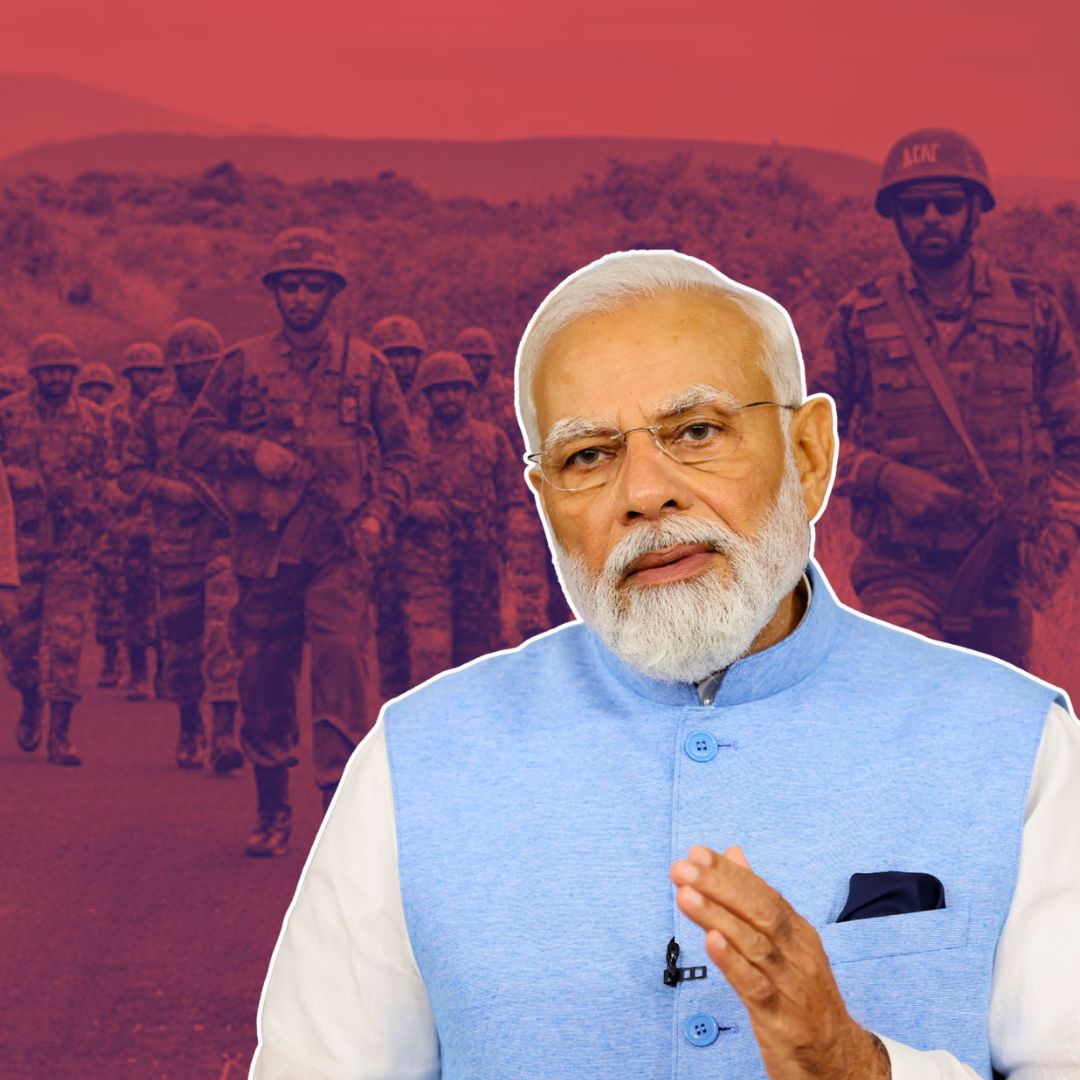Prime Minister Narendra Modi reaffirmed India’s commitment to peace on Tuesday, emphasising that the country will never compromise on its borders or national security.
Speaking at a public event, Modi praised Operation Sindoor, a significant military offensive launched by India in May 2025 as a measured and precise response to the April 22 Pahalgam terror attack that claimed 26 lives.
The Prime Minister commended the armed forces for successfully striking terror camps deep inside Pakistan and Pakistan-occupied Kashmir (PoK) without causing collateral civilian damage.
Defence officials described the operation as a coordinated, multi-domain strike targeting nine key terror camps and logistical nodes linked to Lashkar-e-Taiba and Jaish-e-Mohammed, asserting that it was “non-escalatory, proportional, and focused” on dismantling terror infrastructure.
The operation has since heightened security awareness across Jammu and Kashmir, with officials vigilant against ongoing attempts by militant groups to infiltrate the region.
Operation Sindoor: A Precision Retaliation
Operation Sindoor was initiated in the early hours of May 7, 2025, approximately two weeks after the devastating terror attack in Pahalgam. Indian Air Force jets, supported by loitering munitions and ground-based artillery units, executed a swift 22-minute campaign targeting nine terror camps and supply facilities stretching from Muridke to Bahawalpur in Pakistan’s Punjab province and PoK.
The operation leveraged domestically developed weapons like BrahMos missiles and advanced air defence units, showcasing India’s growing self-reliance in military technology. Defence Minister Rajnath Singh called the strikes “historic,” while Foreign Secretary Vikram Misri described them as measured and non-escalatory.
Careful target selection ensured that no Pakistani military bases or civilian population centres were hit, highlighting India’s operational ethics and commitment to limiting conflict escalation.
Officials highlighted that the operation sent a clear message that India would not tolerate cross-border terrorism and would respond decisively while adhering to international norms.
Escalation and Countermeasures
Following Operation Sindoor, Pakistan launched a series of retaliatory drone and missile attacks targeting Indian military bases across northern and western sectors, including Srinagar, Jammu, Pathankot, and Amritsar. However, India’s Integrated Counter-Drone Grid and multi-layered air defence systems effectively intercepted these assaults, neutralising the threat and recovering debris traced back to Pakistan.
In response, India conducted precision strikes against Pakistani air defence installations involved in facilitating the attacks, carefully balancing deterrence with a commitment to de-escalation.
Skirmishes along the Line of Control intensified briefly but ceased following an agreement between the Director Generals of Military Operations from both sides to halt firing on land, air, and sea starting May 10.
Analysts noted that Operation Sindoor marked a strategic milestone, signalling India’s readiness to apply focused military power while avoiding broader war escalation.
It underscored India’s strategic doctrine of “equal intensity in the same domain” with a sophisticated multi-domain warfare approach involving air, land, and cyber elements.
A Broader Context: Terrorism and National Security
The Pahalgam attack that precipitated Operation Sindoor was notable not only for the tragic loss of 26 soldiers but also for its brutal communal provocation, as terrorists reportedly asked villagers their religion before killing them.
This marked a shift from previous cross-border attacks toward attempts to incite internal divisions within India. The operation was a response to Pakistan’s continued support and harbouring of terrorist groups such as Lashkar-e-Taiba and Jaish-e-Mohammed, which have orchestrated numerous attacks in Indian territory.
Post-operation intelligence has revealed Pakistan’s escalation in drone and missile tactics, prompting India to further strengthen its military readiness and border surveillance.
Amid these tensions, officials stress that the goal remains peace, with strong deterrence to prevent further terrorist ingress.
Diplomatic efforts and international appeals accompany military actions, aiming to curb the cycle of violence through accountability and dialogue.
The Logical Indian’s Perspective
India’s safety and sovereignty demand a robust defence against terrorism, yet true security must extend beyond military might to encompass peace, dialogue, and mutual understanding.
The courage and professionalism exhibited in Operation Sindoor reflect India’s resolve to protect its citizens without resorting to indiscriminate violence.
As the situation evolves, fostering empathy and coexistence alongside meticulous defence efforts will be crucial for lasting peace.
The challenge ahead is balancing vigilant security with a vision of regional harmony, embracing diplomacy as a complement to deterrence.












